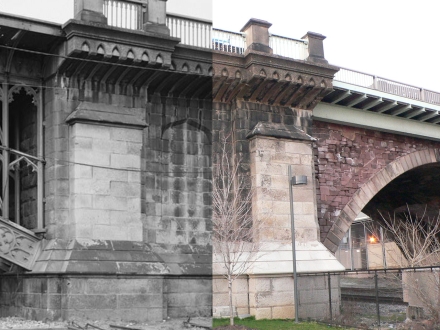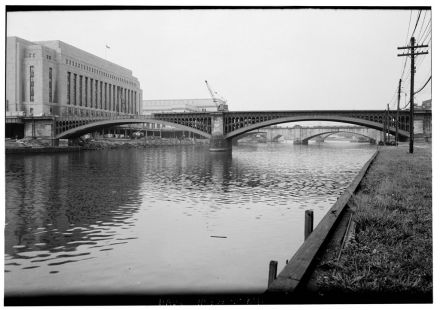Want to find out why the eastern abutment of the uninspiring Chestnut Street Bridge looks like a cathedral? Check out my post at Phillyhistory.org here. Above is a pretty shoddy overlay of a 1958 HAER photo onto a relatively picture of the bridge taken last April when Penndot was doing a structural investigation of the bridge. Interestingly enough, concrete from of the “new” 1956-59 bridge was failing with chunks falling on the Schuylkill Banks path. The 1866 abutment seemed to be holding up.
[DEMOLITION OF KNEASS’S 1866 BRIDGE, 1957-58 FROM HABS]
One of the issues that I wanted to clarify in the Phillyhistory.org piece was that the Expressway and increased traffic both conspired against Kneass’s bridge and led to its demise. According to a Streets Department publication, Paving the Way from 1956-59, that while most of the bridge rehab projects “were directly connected with expressway construction”… “considerable emphasis was given to the replacement of existing spans unable to handle today’s traffic volumes. Structures like those on Chestnut St…..”
Follow the jump for photos of the Penndot bridge inspection and the offending concrete.
Continue reading ““Of Graceful Proportions”: Strickland Kneass’s Cast Iron Chestnut St. Bridge”




